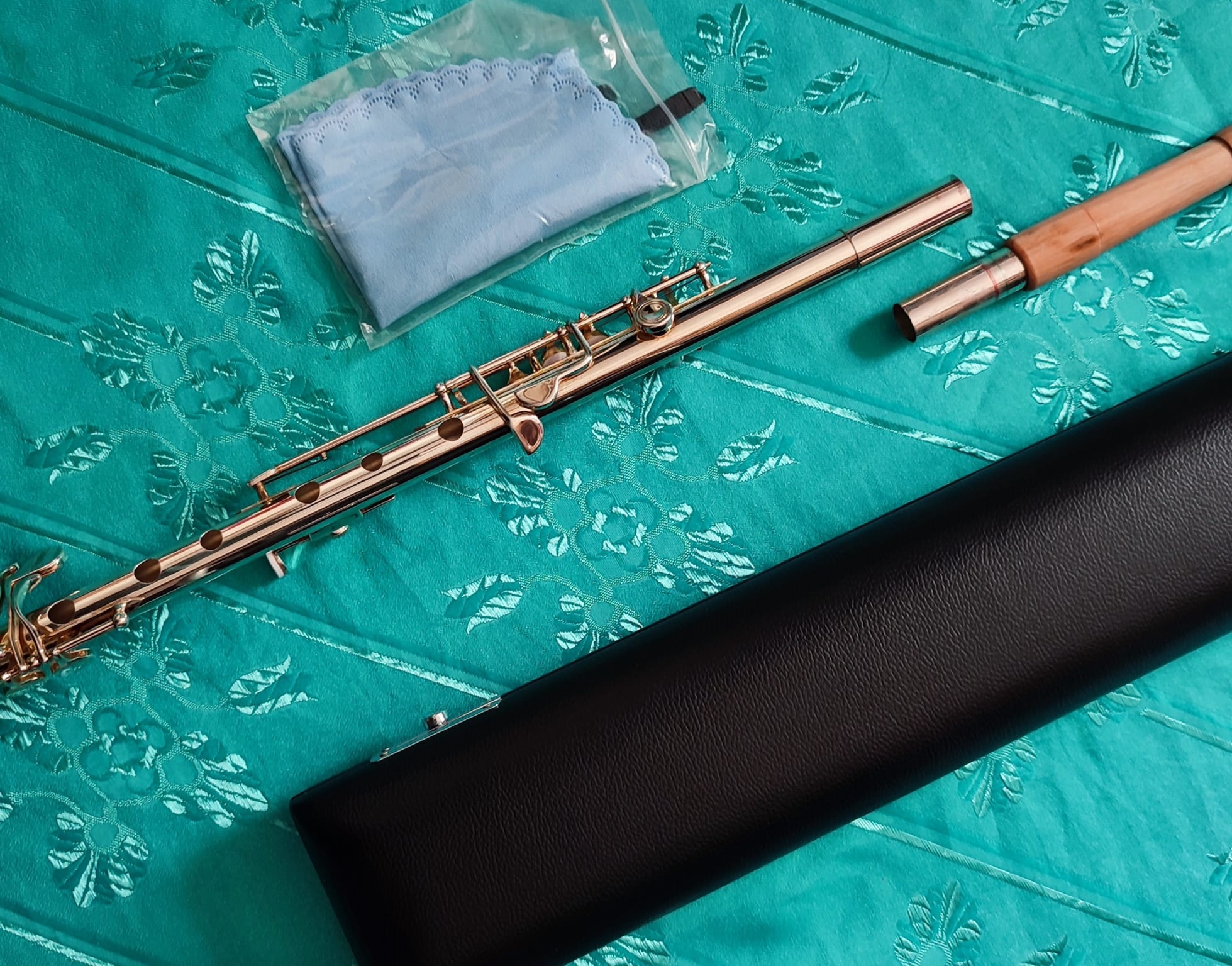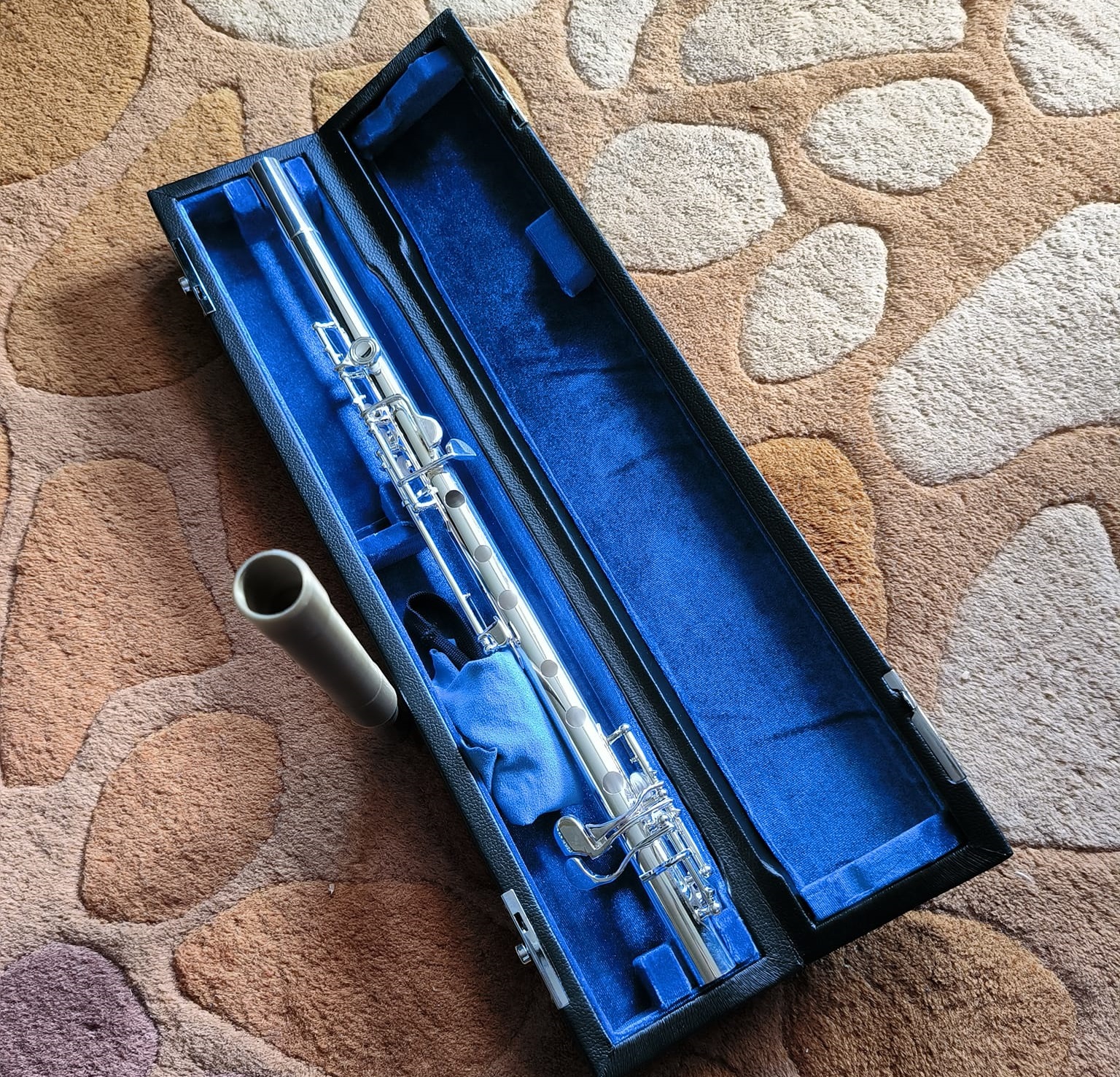Nailute
Woodwinds
Europe
Between 1901 and present
Video
The Nailute is a contemporary wind instrument developed by Ghasi Yussef from Germany. This innovative instrument represents a significant advancement in the design and capabilities of traditional wind instruments, offering musicians a unique tool for expression of middle eastern maqam music. It is classified as a wind instrument, specifically within the family of flutes. Its design and playing technique align it with other aerophones, where sound is produced by the vibration of air.
The Naiulute is inspired from the Bohem system flute mechanisim to produce all 24 quarter tones needed for Maqam modal music. It essentially serves as an alternative to the traditional Arabic Ney way of playing by carriying a set of 12 Neys tuned in all pitches of the equal temeperment system. Making it not only sufficient to cover the entire range using one instrument, but also enabling several ways to perform ornamentations that are considered extremely difficult to perform while maintaining in accurate tuning on the Ney while switching maqams.
History
The Nailute is a modern invention, emerging in the 21st century. Its development reflects contemporary efforts to innovate within the realm of musical instruments, combining traditional elements with new design concepts to enhance musical expression. Mr. Yussef spent more than 20 years during his journey to improve the Ney, and came up with the Nailute system. The instrument evolution witnessed many models, out of them Nailute 7 and Nailute were the most succesfull. Today the Nailute is recognized and adopted by the most influencial Ney players in the middle east. However, it is facing several challanges to increase the adoption rate by musicians, including it’s limited availability, high production cost, and exclusivity of production by Mr. Yussef.
Construction
The Nailute’s construction details are not extensively documented. However, it is known to be a wind instrument, suggesting it is crafted from materials commonly used in flute-making, such as various woods or metals. The design likely incorporates features that facilitate its unique sound production and playing techniques.
The Nailute is a new wind musical instrument that combines elements of the Middle Eastern reed flute, known as the Nay, with features from the Western silver flute. It represents a hybrid approach to traditional wind instruments.
Types and Key Features:
As a newly developed instrument, the Nailute currently exists in its original form as an evolution of the Ney. Future developments may lead to different models or adaptations as musicians and instrument makers explore its potential.
Materials: The Nailute is made from nickel silver and plated with silver paint using an electroplating process.
Tuning: It can be tuned similarly to a flute, allowing for adjustments in pitch by lengthening or shortening the instrument.
Design: The instrument consists of two main parts: the mouthpiece (or head) and the body. It includes additional holes that allow for more notes to be played compared to some traditional flutes.
Versatility: The Nailute offers additional tones beyond those found in traditional flutes like the Nay, making it versatile for various musical styles and modes.
Models
There are different models within the Nailute project, such as the “Nailute 0” or “Nailute 7,” each offering unique characteristics while maintaining core similarities with both Eastern and Western influences.
Usage and Characteristics
The Nailute is designed to help performers explore new areas within Eastern music while leveraging familiar techniques from both Middle Eastern and Western traditions. Its unique sound makes it suitable for various musical genres and emotional expressions.
The Nailute is characterized by its distinctive sound, which sets it apart from traditional flutes. Its design allows for a range of tones and expressions, providing musicians with a versatile instrument for various musical genres.
Sound Production
Sound is produced on the Nailute by blowing air into the instrument, causing vibrations that generate musical tones. The specific design of the Nailute influences the quality and range of sounds it can produce, offering a unique auditory experience.
Playing Methods
Playing the Nailute involves techniques similar to those used with other wind instruments. Musicians must control their breath and finger positions to produce the desired notes and expressions. The instrument’s design may also allow for innovative playing methods, contributing to its unique sound.
Roles in Music and Cultural Significance
The Nailute, being a modern instrument, is still establishing its role in musical appearances. Its unique sound offers potential for use in various musical genres, from classical to contemporary or jazz, allowing musicians to explore new sonic landscapes.
As a recent innovation, the Nailute’s cultural significance is still evolving. Its development reflects a broader trend in music towards innovation and the blending of traditional and modern elements. As more musicians adopt the Nailute, it may become an integral part of contemporary musical culture.
It represents a significant advancement in wind instrument design, offering musicians a unique tool for expression. Its modern origins and innovative characteristics make it a noteworthy addition to the world of musical instruments.
FAQ
What is the Nailute musical instrument?
The Nailute is a rare wind instrument, showcased by musician Ghasi Yussef from Germany. It produces unique melodies, contributing to the diversity of wind instruments. Its specific design and origin details are limited, but its distinct sound adds to its allure.
Who is known for playing the Nailute?
Ghasi Yussef, an Iraqi musician from Germany, is recognized for the Nailute Inention. The Nailute is adopted by Dr. Hichem Badrani from tunisia, as one of the most remarkabe Ney players in the Arab world.
What type of music is the Nailute used for?
While specific genres associated with the Nailute are not well-explored beyond Arabic Maqam music yet, its unique sound suggests potential in various musical styles. Its distinct tones can complement diverse musical expressions.
 Links
Links
References
Other Instrument
Categories



















